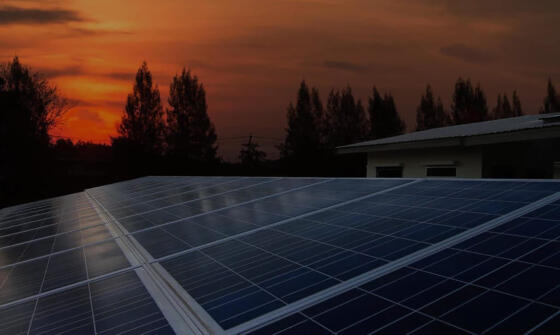
Hyped up by H
The Hamburg port is, literally speaking, a construction site of the energy transition process. In the decommissioned coal-fired powerplant Moorburg, a large-scale electrolyzer with a capacity of 100 megawatts is planned to split water into hydrogen and oxygen starting in 2025. The wind and the sun will supply the required energy, which is why the Moorburg hydrogen is supposed to be “green” and therefore CO2-free. Green hydrogen is truly a multitalented substance. It’s not only able to supply energy for industry, households and mobility but can also be used as a process gas, for instance in steel and fertilizer production. Because hydrogen has such versatile uses without causing CO2 emissions that are harmful to the climate countless projects for producing, transporting, storing and using hydrogen are launched not only in Hamburg but around the globe. Seldom have governments, academia, the business community and environmental associations joined forces as intensively as in this area.
Based on a study by the consulting firm McKinsey, the Hydrogen Council in which the Schaeffler Group is a member of the steering committee estimates that in the field of hydrogen production projects with a volume of 500 billion U.S. dollars are currently in the pipeline, with new projects being added practically on a daily basis. In 2050, global revenue in the hydrogen economy could amount to 2.5 trillion U.S. dollars and over 30 million jobs might be created.
The crux of transportation and storage
However, before that happens numerous challenges remain to be mastered. That particularly applies to storage and transportation, both of which are crucial factors for a global hydrogen economy. Today, we’re shipping oil and gas from producing to consuming countries or make it flow through pipelines. Hydrogen has to be transported, too – from countries in which green electricity for hydrogen production is cheap, enabling surplus production, to regions with a great hunger for energy.

However, hydrogen as the lightest of all elements is highly volatile, which makes transportation and storage considerably more difficult. In the form of gas, it can be stored in multi-layered pressure tanks (300 bar during transportation, 700 bar in a tank) and in underground caverns or in liquid form at –253 °C (–423.4 °F) in insulated cryogenic tanks. Both variants are technically complex and energy-intensive. Alternatively, hydrogen can be converted into methane, syngas or liquid synfuels, for example. This has the advantage of easier and more versatile handling, while the energy-intensive nature of the conversion process is a disadvantage. It takes a considerable surplus of green electricity to produce green hydrogen, to transform it and to subsequently use it in an energetically sensible way, for instance in an internal combustion engine with a maximum efficiency of 40 percent.
Adsorption, a process in which the hydrogen molecule is linked to solid or liquid carriers, is another possibility of storing and hauling hydrogen. The abbreviation LOHC, which stands for liquid organic hydrogen carrier, is frequently mentioned in this context. In this process, hydrogen is chemically linked to a viscous carrier in a hydrating reaction. As a result, the utilization of hydrogen becomes simpler, safer and available at lower cost because the current crude oil-based energy system could be adapted without major modifications to the new energy on which our hopes are pinned.
“Hydrogen can be transported as LOHC like crude oil or gasoline products are today, for instance in a tank vessel or the tank car of a train. The bound hydrogen can subsequently be stored and distributed in appropriate tanks and filling stations,” explains LOHC expert Professor Peter Wasserscheid, Chair of Chemical Reaction Engineering at Friedrich-Alexander-Universität Erlangen-Nürnberg and Director of the Helmholtz Institute Erlangen-Nürnberg for Renewable Energy (HI ERN). “Our approach is the use of hydrogen logistics ‘clothed’ in today’s liquid fuels. This technology has now advanced to the level of industrial usability.” In 100 liters (26.42 gallons) of LOHC around 5.7 kilograms (12.6 pounds) of hydrogen could be bound. For comparison: this amount of hydrogen equates to the fuel tank capacity of a Toyota Mirai with which that fuel cell car can cover a distance of up to 1,000 kilometers (621 miles).
Another advantage of LOHC is that at 1.9 kWh per liter the volumetric energy density of hydrogen is even slightly higher than that of gaseous hydrogen from a pressure tank (1.56 kWh/l).
Schaeffler is driving LOHC technology
A key technology is still lacking as an enabler for actually filling a tank with LOHC and using it like a conventional liquid fuel: a hydrogen fuel cell that can operate directly with LOHC. That’s precisely what Schaeffler is developing together with Hydrogenious LOHC Technologies GmbH and HI ERN. Schaeffler’s part in the project is the production of suitable bipolar plates in which the company uses synergies and draws on know-how from previously developed fuel cell technology. In conventional fuel cells as well as in LOHC versions, bipolar plates – as an integrated assembly between two membrane electrode units of a fuel cell stack – serve other purposes besides electrically connecting the cells: distributing gas across the surface of the plate, separating gas between adjoining cells, plus external sealing and cooling of the system.
"Water will one day be employed as fuel. It will furnish an inexhaustible source of heat and light, of an intensity of which coal is not capable.“
Jules Verne in 1874 in his novel “Mysterious Island”
Commenting on the current state of the joint LOHC project, Professor Peter Wasserscheid, who in addition to his role as the director of HI ERN is a co-founder and member of the scientific advisory council at Hydrogenious, says, “At the moment, this onboard technology cannot be accommodated underneath the hood of a small car yet but it definitely can be in the technical operations sections of a train or ship. Our goal is to make these units increasingly powerful, smaller and compact. Going forward, that may definitely be heading in the direction of trucks, buses, construction machinery, forestry machines or mine vehicles with prospects up to and including small trucks or large passenger cars.”
Industrializing hydrogen technologies
No matter in which ways hydrogen will be transported, transformed or used: it has to be produced first. The 1.5-degree scenario of the International Organization for Renewable Energies (IRENA) predicts an electrolyzer capacity of 5,000 gigawatts for 2050, which would make enough hydrogen available to cover twelve percent of the global energy demand. That means that 50,000 large-scale electrolyzers the size of the plant in Hamburg-Moorburg would have to be established worldwide.
Technological innovations and their accelerated rollout are of crucial importance to ensuring that this will happen. Equally important is the achievement of competitive economic feasibility of carbon-free hydrogen as soon as possible. One of the keys to success in this regard is the provision of sufficient and low-priced green electricity by expanding renewable energies. The fact that, today, gray hydrogen produced with fossil energy costs only a fourth of what green hydrogen costs shows the need for action in this area. Potential cost reductions with a view toward scaling and market ramp-up of the technologies are another key to success.
Schaeffler intends to make important contributions to this effort based on its diversified technological know-how. “Due to our industrial and automotive divisions, we’re optimally poised to address hydrogen on a broad base. We have a unique competitive advantage here, especially because an industrialized supplier landscape is still lacking in many areas of hydrogen technology,” says Dr. Stefan Gossens, Vice President Hydrogen Strategy at Schaeffler. “We’re already in contact with many potential hydrogen customers in a wide range of business activities. Our forte in industrialization enabling us to quickly transfer innovations into mass production – at top quality – is a major advantage.”
“We believe that hydrogen will play a vital role in enabling clean mobility in the future. The establishment of a hydrogen economy and the transition to sustainable energy resources will largely depend on the industrialization of reliable supply chains for the new technologies.”
Klaus Rosenfeld, CEO of Schaeffler AG
Strong connections accelerate innovations
In the field of hydrogen technology, Schaeffler benefits particularly from its core competencies in materials, forming and surface technologies. In addition, cross-divisional collaboration within the Group will be another crucial aspect. In the industrial division, for instance, hydrogen is a strategic business segment led by Bernd Hetterscheidt, who says, “In the industrial division, we have the major advantage of already working closely on the production of green energy, for instance from wind power. That means we’re located in areas where electrolyzers will subsequently be used to directly convert wind power into hydrogen. The contacts we enjoy there with our customers, our existing know-how in material transformation and electrochemistry, plus our expertise in industrialization will be helping us to be successful in the marketplace.”
Offshore hydrogen
Ideally, green hydrogen is produced where green electricity is generated – for instance at offshore wind farms. There, out on the ocean, water exists in abundance as well, albeit in the form of salt water and is therefore unusable for conventional electrolyzers requiring ultra-pure liquids. The SEA2H2 project, in which the Dutch startup Hydron Energy B.V. that has belonged to Schaeffer since the summer of 2021 is involved, is developing a process that desalinates and purifies the seawater – which, due to the utilization of waste heat from the electroylsis process, is very energy-efficient. Hydron has already demonstrated that its water treatment works in a test plant. The long-term objective is to produce green hydrogen using energy from offshore wind farms and to transport it ashore via pipelines.

Particularly in the area of bipolar plates, Schaeffler has become an in-demand partner within a short period of time. The previously mentioned LOHC project with HI ERN and Hydrogenious is just one of the collaborative partnerships in which Schaeffler is doing pioneering work. A research project launched this spring together with Bekaert, Johnson Matthey and TNO that aims to optimize electrolysis stacks with proton exchange membranes (PEMs) is another example. PEM units react very fast because they can process high densities of electric current. In addition, they’re very compact. However, the interior materials installed in them must be very robust due to the acidic medium in which they’re used. The consortium is planning to create the basis on which a new generation of highly efficient, durable and less costly electrolyzers can be built within the next three years.

Another cooperation example at Schaeffler is the establishment of the 50:50 joint venture called Innoplate. The partner there is Symbio that itself is a joint venture between Faurecia and Michelin and one of the global market leaders in fuel cell technology for the automotive industry. At its headquarters in Haguenau, France, Innoplate is supposed to start producing bipolar plates for industrial-scale PEM fuel cells starting in early 2024 with a workforce of 120. The production target for 2030 is 50 million units for the global market. The alliance between the two big players, Schaeffler and Symbio, makes it possible to offer customers fuel cells with higher performance and greater capacities at a lower price.
“We believe that hydrogen will play a vital role in enabling clean mobility in the future. The establishment of a hydrogen economy and the transition to sustainable energy resources will largely depend on the industrialization of reliable supply chains for the new technologies,” says Klaus Rosenfeld, Schaeffler’s CEO.



